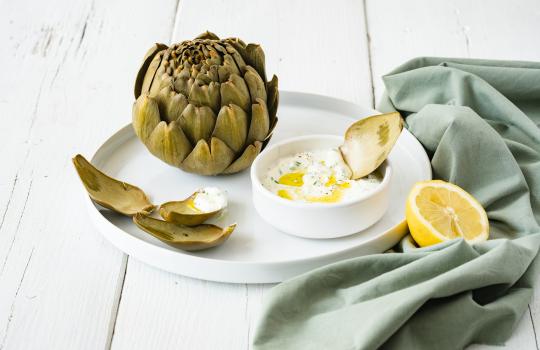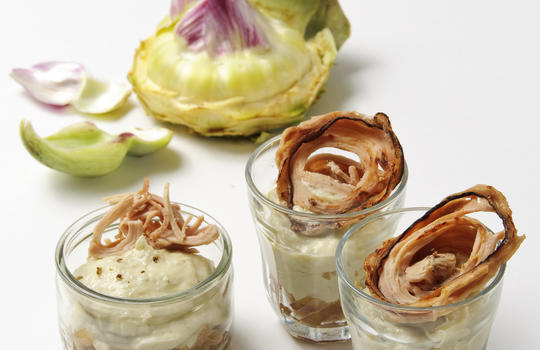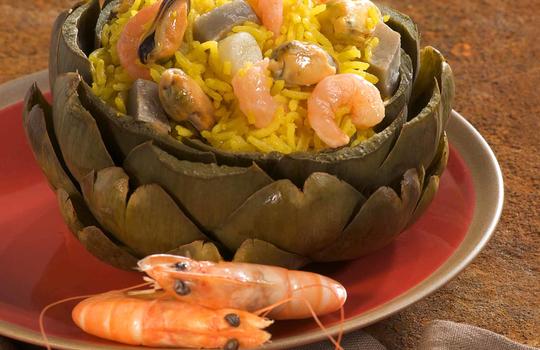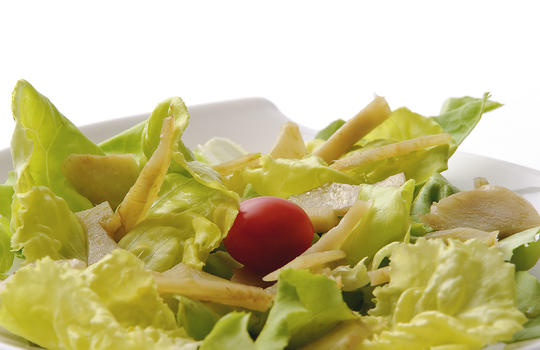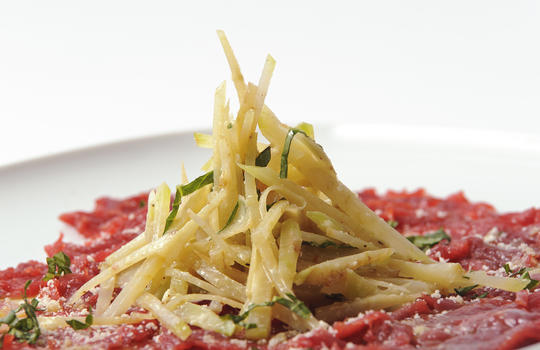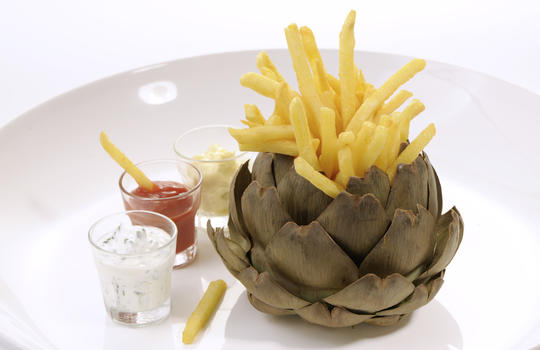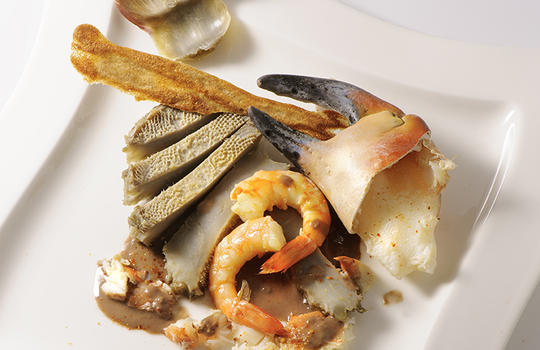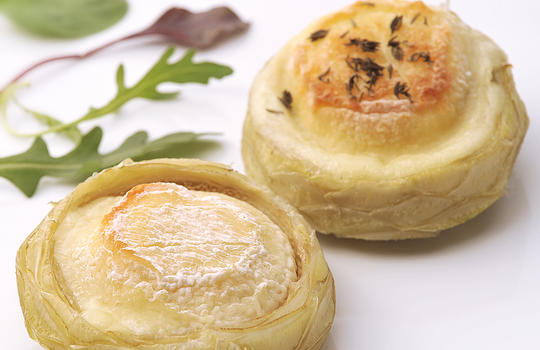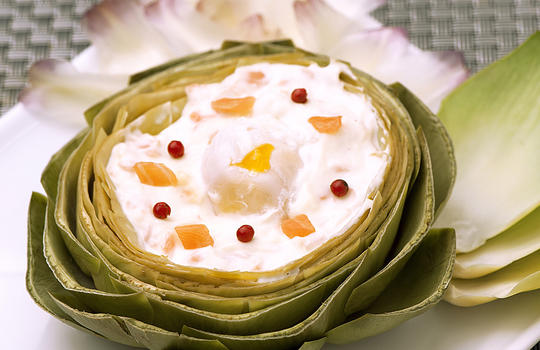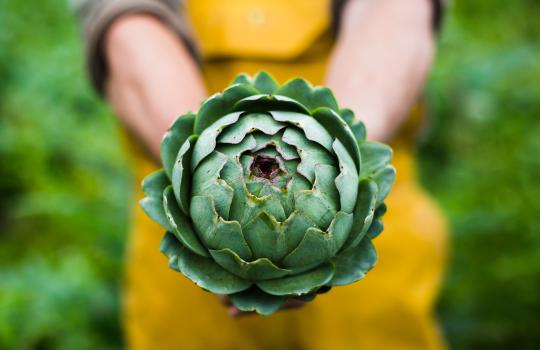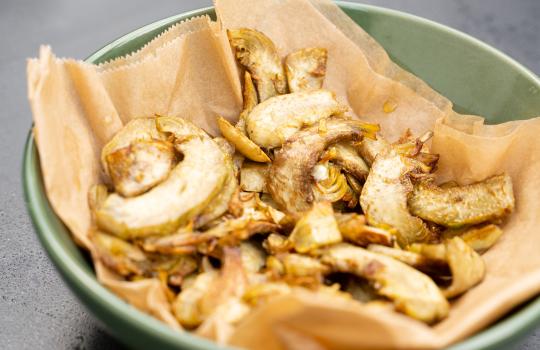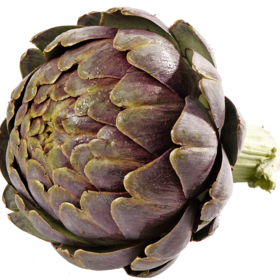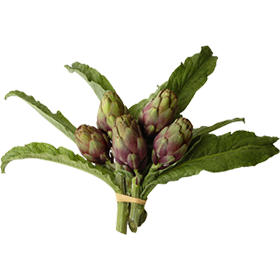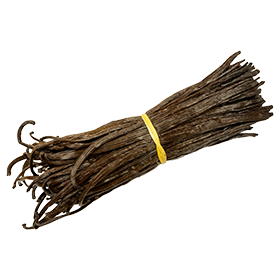Camus and Castel artichokes
400-700 g
Weight
May - Nov.
Season
Harvested
by hand
France’s number 1
artichoke producer
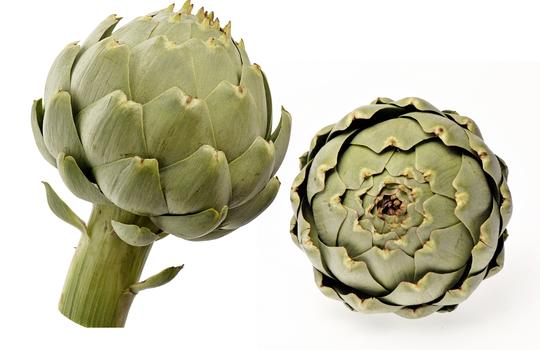
Season
- Peak season
- Available
- Not available
Did you know?
Artichokes were first introduced in France on the table of Queen Catherine de Medici. ‘Camus de Bretagne’ is the most famous artichoke variety and was created around 1810 by an agronomist from the Paris region. The artichoke belongs to the Asteraceae family. It is one of the rare crops where the flower bud is eaten: what we know as the heart. The flower bud (heart) is surrounded by bracts (or leaves), the bottom ends of which are edible.
Camus is Prince de Bretagne’s historic and emblematic variety and the most widely cultivated artichoke in France. Deep ash green in colour, they have a well rounded and tight capitulum, with broad, short leaves, the first rings of which are sometimes open. Their hearts are tender and fleshy. Castel is a more recent variety and appreciated for its voluminous, very fleshy heart.
Artichokes are cultivated entirely manually. They require 250 to 300 hours of work per hectare (compared to eight hours per hectare for cereal crops) and eight passes per plot for harvesting. Plants remain in the ground for three years. At harvest time, market gardeners cut the heads one by one by hand, using a knife, when they reach maturity. After harvesting each year, artichokes are cut back to ground level and a new clump then forms, with the market gardeners selecting a single shoot (a ‘sucker’) by hand. Each sucker produces a large central artichoke (called the ‘mother’) and several smaller ones on the sides (the ‘wings’). Numerous passages for mechanical weeding using hoes are conducted in the fields throughout the year.
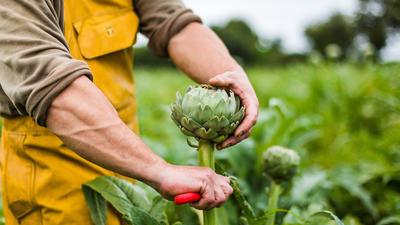
Cooking tips
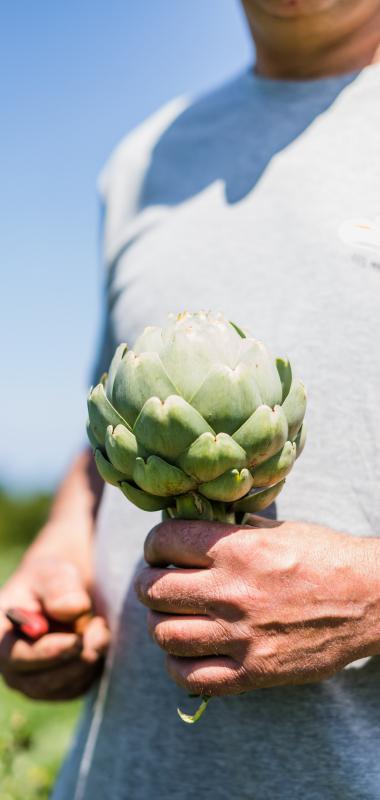
HOW TO CHOOSE CAMUS AND CASTEL ARTICHOKES
Artichokes should have a beautiful uniform green colour, free of spots. Artichokes should be heavy, with brittle, tightly packed leaves.
Brown scratches can sometimes be found on the leaves. They are due to artichokes rubbing against each other and do not affect the quality.
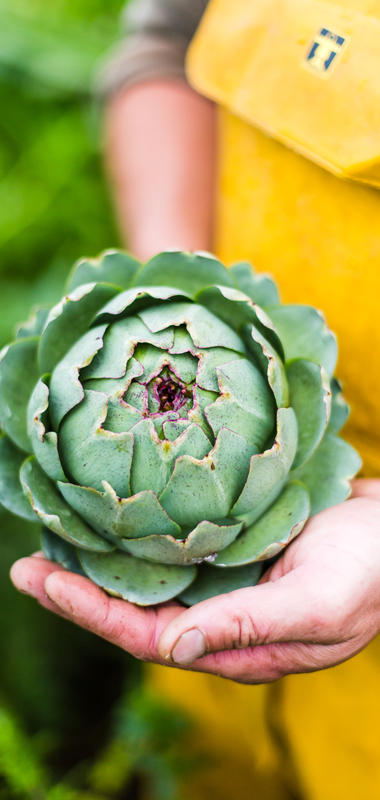
HOW TO PREPARE CAMUS AND CASTEL ARTICHOKES
Always start by breaking the stem by hand, do not cut it. Breaking the tail like this makes it possible to extract the fibres that connect it to the heart. Now wash your artichoke.
And for the more expert, you can extract the artichoke heart during preparation:
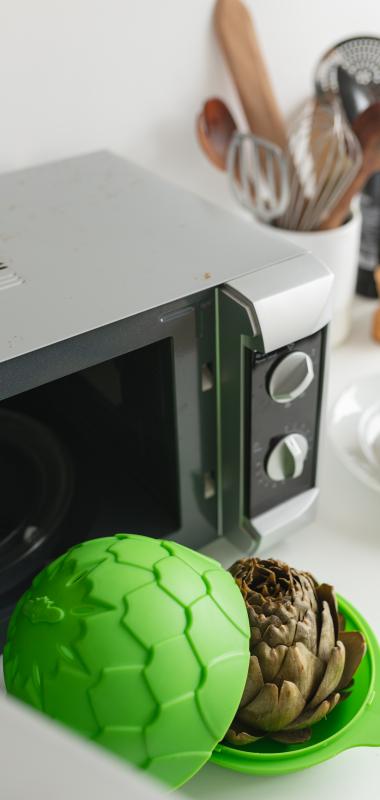
HOW TO COOK CAMUS AND CASTEL ARTICHOKES
Several cooking methods can be used for artichokes:
30 to 40 mins
In boiling water
9 to 11 mins
In the microwave
20 to 30 mins
Steam cooking (pressure cooker)
1 hour
In the oven
And to tell if it’s done, pull off one of the leaves. If it comes off easily your artichoke is ready to enjoy!
Prince de Bretagne has launched the Articook/Végécook, a microwave-safe box for quick and easy artichoke cooking: 9 -11 minutes maximum! Perfect for cooking an artichoke on the go at home or at work.
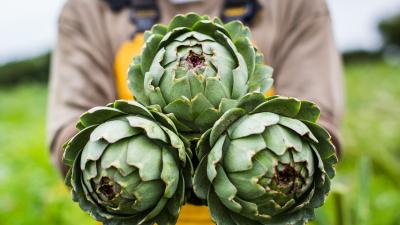
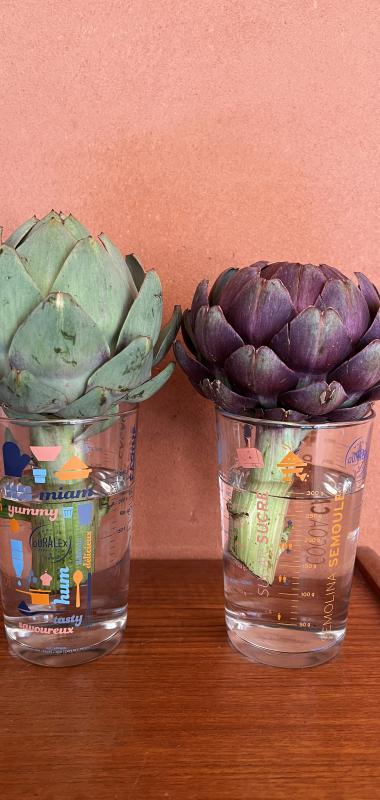
HOW TO STORE CAMUS AND CASTEL ARTICHOKES
All producers will tell you that artichokes are best a few days after harvest, even when a little withered. To maintain their freshness, artichokes should be stored in a cool, humid place, and away from the light. You can also submerge the stem like a flower in a vase or tall container. Artichokes can be stored for a few days under these conditions.
When cooked, artichokes should be eaten quickly to prevent their taste from deteriorating.
Artichoke hearts are often marinated for at least 30 minutes in oil, vinegar, lemon juice and/or white wine and seasoned. They can then be stored in sterilised jars. They will keep this way for several months. Artichokes can also be frozen, though they should first be blanched in water to which lemon juice has been added.
Cooking suggestions
Cooked artichokes can be eaten in many ways, both as an aperitif and a main course.
As an aperitif, for example, you can dip the leaves in different sauces (vinaigrette, mayonnaise, yogurt with herbs and spices etc.) or transform the hearts into caviar! As a main course, they can be eaten whole, stuffed or the cooked hearts can be used in vegetarian recipes (au gratin with cheese) or with meat or fish (tagine, stir-fries, pizza etc.).
Chef’s tip
Add a few drops of lemon or even a slice of lemon to the cooking water as this will maintain the artichoke’s green colour and prevent the heart from darkening during cooking.
Nutrition
Artichokes offer numerous health benefits. They are high in fibre and potassium, and also a source of vitamin B9 (folic acid).
| Energy (kj/kcal) | 240/58 |
|---|---|
| Fat (g) | 0.3 |
| of which saturated fat (g) | 0.1 |
| Carbohydrate (g) |
5 |
| of which sugar (g) | 13 |
| Dietary fibre (g) | 12.4 |
|
Protein (g) |
2.6 |
| Salt (g) | 0.04 |
| Potassium (mg) | 637 |
| Folic acid (B9 in µg) |
40.7 |
| Vitamin K (µg) | 14.8 |


